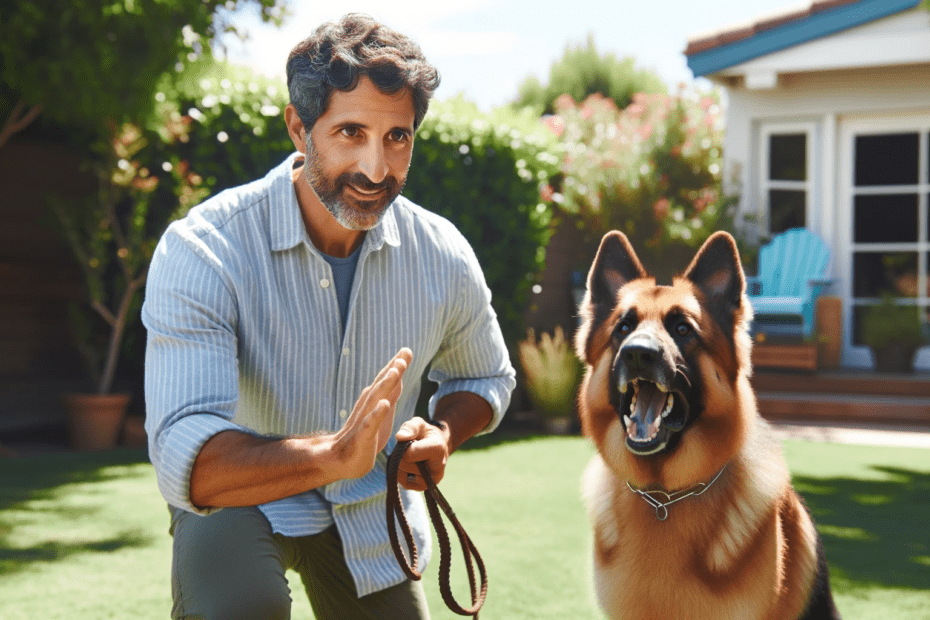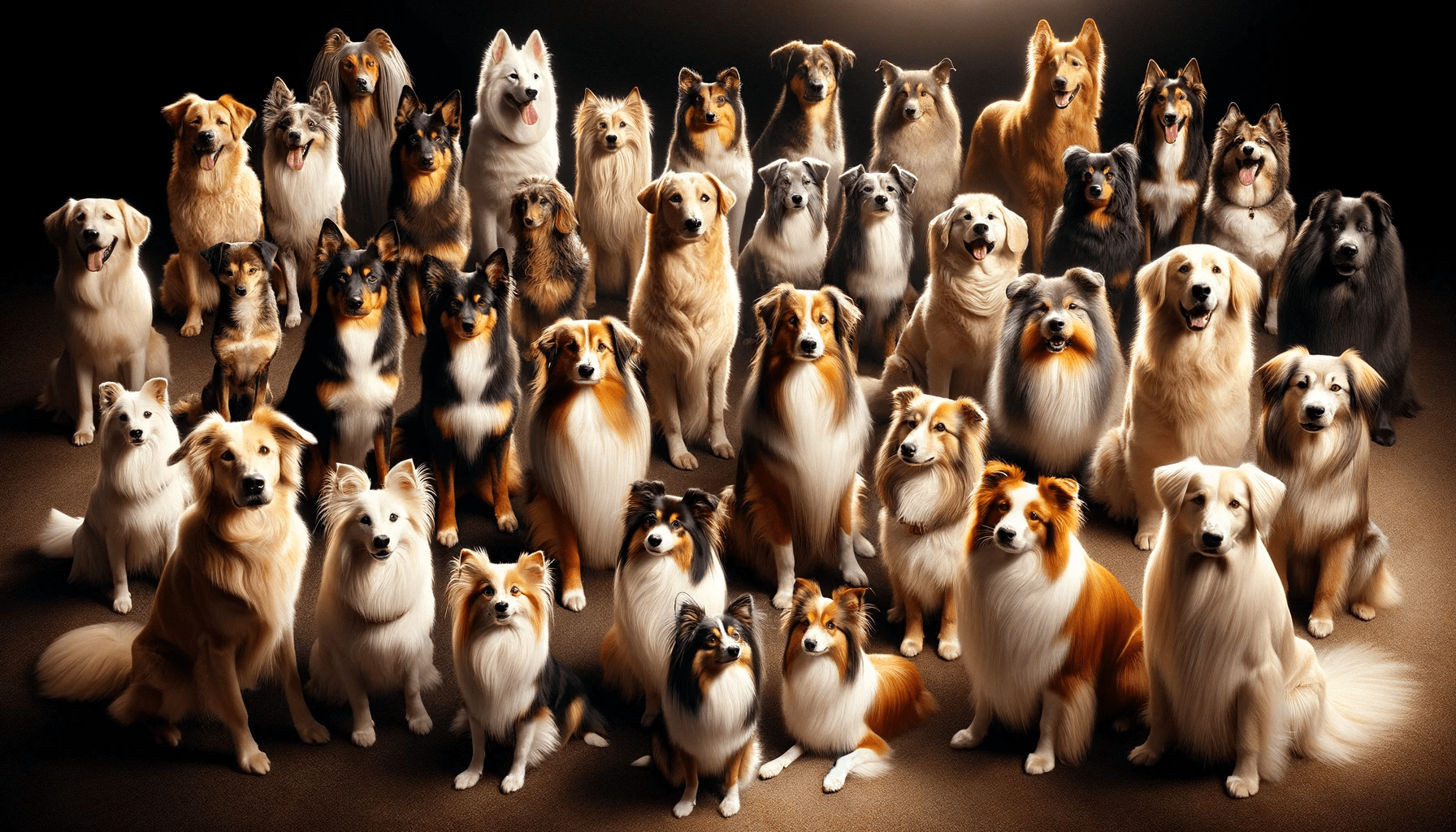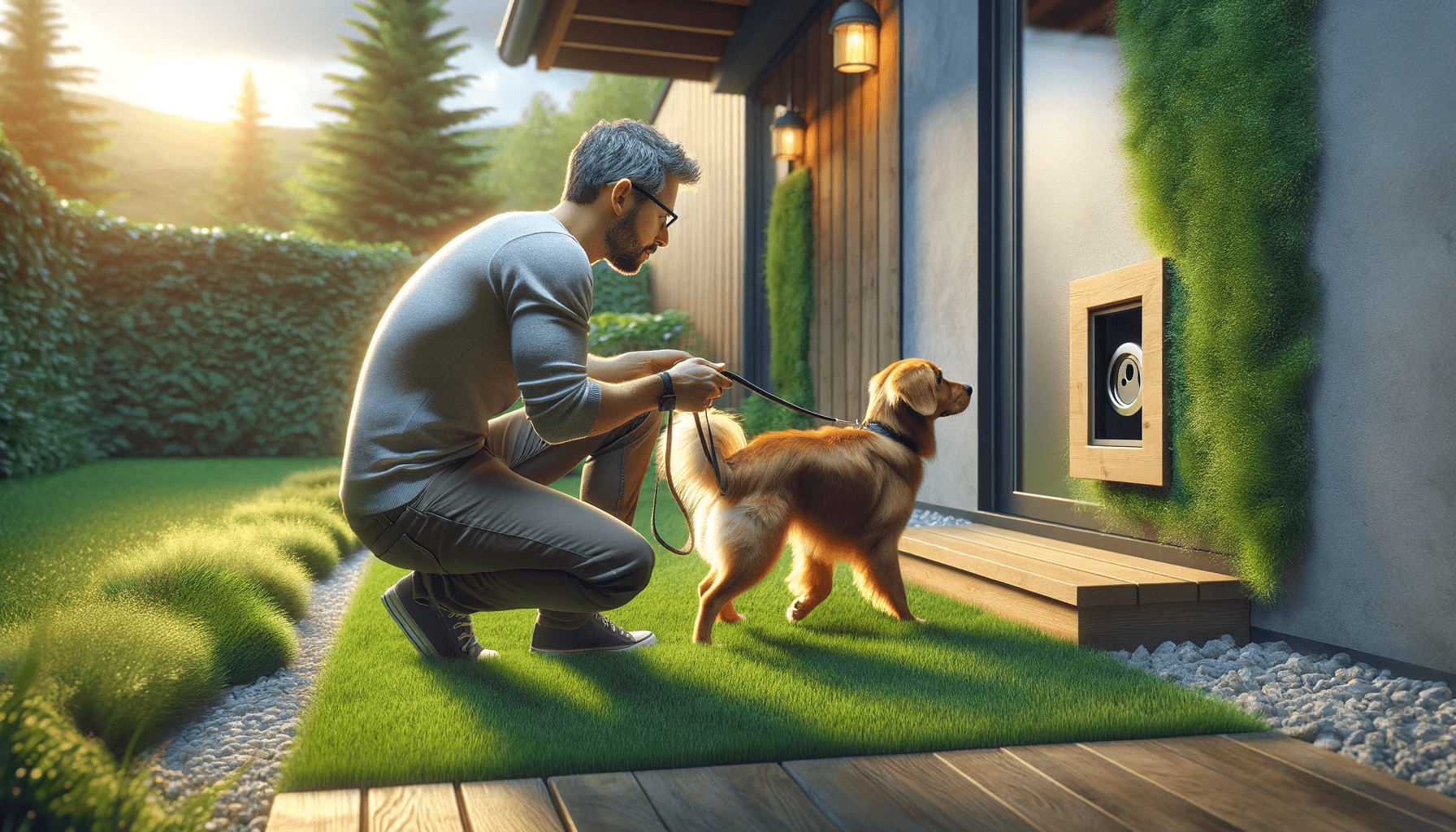Are you struggling to manage your dog's aggressive behavior? Look no further! This expert dog training tutorial is here to help you understand and address aggression in your furry friend.
By identifying triggers and warning signs, using positive reinforcement techniques, and establishing boundaries, you can effectively manage and reduce aggressive tendencies.
Additionally, socialization and desensitization exercises, along with seeking professional help when needed, will ensure a well-behaved and happy pup.
Let's get started on your journey to a harmonious relationship with your canine companion.
Key Takeaways
- Aggression in dogs can be triggered by fear, anxiety, territoriality, and frustration.
- Recognizing aggression triggers and warning signs is important for managing aggression.
- Positive reinforcement techniques, such as treats and praise, are effective in training and managing aggression.
- Establishing clear boundaries, rules, and consequences is crucial in managing aggression.
Understanding Aggressive Behavior
To better manage aggression in your dog, it's important to understand why they display aggressive behavior. Understanding aggression is crucial for effective training and ensuring the safety of both your dog and others. Aggression in dogs can be triggered by various factors, including fear, anxiety, territoriality, frustration, and resource guarding. By identifying these aggression triggers, you can develop strategies to address them and modify your dog's behavior.
Fear-based aggression is common, where dogs may display aggression when they feel threatened or unsafe. Anxiety can also lead to aggressive behaviors, such as excessive barking or growling. Territorial aggression occurs when dogs feel the need to protect their space or belongings. Frustration can arise from unmet expectations or restrictions, causing dogs to lash out. Resource guarding aggression is seen when dogs become possessive over food, toys, or other valuable items.
Identifying Triggers and Warning Signs
Understanding your dog's aggression triggers and recognizing warning signs is essential for effectively managing their behavior. Recognizing aggression triggers means being able to identify the specific situations or stimuli that cause your dog to become aggressive. These triggers can vary from dog to dog, but common examples include territoriality, fear, food guarding, or frustration. It's important to pay attention to your dog's body language and behavior in different situations to identify these triggers.
In addition to recognizing aggression triggers, it's crucial to respond to warning signs appropriately. Warning signs can include growling, barking, snarling, raised hackles, or a stiff body posture. When you notice these warning signs, it's important to remain calm and avoid escalating the situation. Remove your dog from the triggering situation if possible, and redirect their attention to something more positive.
It's important to remember that punishment or aggression towards your dog will only make the situation worse. Instead, focus on positive reinforcement training techniques to modify your dog's behavior and help them learn more appropriate responses to triggers. By recognizing aggression triggers and responding to warning signs, you can effectively manage your dog's aggression and create a safe and harmonious environment for both your dog and yourself.
Positive Reinforcement Techniques
Now let's talk about the effectiveness of reward-based training and how it can help in managing aggression.
By using positive reinforcement techniques, such as treats, praise, and play, you can motivate your dog to exhibit desired behaviors.
This approach not only strengthens the bond between you and your dog but also helps build trust and confidence, leading to better overall obedience and a reduction in aggressive tendencies.
Reward-Based Training Effectiveness
Achieve effective training results by utilizing reward-based techniques that employ positive reinforcement. Reward-based training benefits both you and your dog by creating a positive association with desired behaviors.
Here are four key reasons why reward-based training is effective:
- Motivation: Using rewards such as treats, praise, or playtime motivates your dog to repeat desirable behaviors.
- Communication: Positive reinforcement helps you clearly communicate your expectations to your dog, reinforcing the desired behavior.
- Bonding: Reward-based training strengthens the bond between you and your dog, fostering trust and cooperation.
- Long-term results: By focusing on rewarding good behavior, you establish a foundation for long-term obedience and problem-solving skills.
While there may be alternatives to reward-based training, such as punishment-based methods, these techniques can lead to fear, anxiety, and aggression in dogs. Opting for reward-based training techniques ensures a happier and healthier training experience for both you and your furry friend.
Building Trust Through Rewards
By implementing positive reinforcement techniques, you can build trust with your dog and promote a strong bond. Building confidence and effective communication are key components in this process.
When using rewards, such as treats or praise, to reinforce desired behaviors, your dog will associate those behaviors with positive experiences. This helps to build their confidence and trust in you as their owner and trainer.
By consistently rewarding good behavior, you're effectively communicating to your dog what's expected of them. This clear communication helps to strengthen the bond between you and your dog, as they feel secure and understood.
Remember to be consistent and patient, as building trust takes time and effort. With positive reinforcement techniques, you can create a harmonious relationship with your dog based on trust and understanding.
Establishing Boundaries and Rules
To effectively manage aggression in your dog, it's crucial to establish clear boundaries and rules. This means clearly communicating what behaviors are acceptable and what're not.
Consistency is key in enforcing these rules, so make sure to follow through with consequences for unwanted behaviors every time.
Additionally, positive reinforcement techniques can be used to reward and reinforce desired behaviors, helping your dog understand what's expected of them.
Importance of Clear Boundaries
Establish a firm structure in your dog's training routine to ensure clear boundaries and rules are established from the start. This is crucial for maintaining a harmonious relationship with your canine companion. Clear communication is key when setting boundaries, as it allows your dog to understand what's expected of them. By being an assertive leader, you establish yourself as the one in charge and your dog will learn to respect your authority.
Here are four important points to consider when establishing clear boundaries:
- Consistency: Consistently enforce the rules and boundaries you set to avoid confusion and maintain clarity.
- Reinforcement: Use positive reinforcement to reward good behavior and discourage undesirable actions.
- Boundaries within the home: Establish specific areas where your dog is allowed and not allowed to go to prevent any unwanted behavior or accidents.
- Physical boundaries: Use fences or leashes to create physical boundaries, especially in outdoor spaces, to keep your dog safe and prevent them from wandering off.
Consistency in Rule Enforcement
Maintain consistent rule enforcement to establish clear boundaries and reinforce desired behavior in your dog. Establishing consistency in the way you enforce rules is crucial for effective dog training.
Dogs thrive in environments where they know what's expected of them. By implementing consequences consistently, you're teaching your dog that certain behaviors aren't acceptable. This helps them understand their boundaries and what's considered appropriate behavior.
Consistent rule enforcement also helps reinforce desired behaviors. When you consistently reward your dog for good behavior and provide consequences for unwanted behavior, they learn what actions are desirable and will repeat them.
Positive Reinforcement Techniques
By consistently using positive reinforcement techniques, you can establish clear boundaries and rules for your dog's behavior. Positive reinforcement is one of the most effective dog training methods, focusing on rewarding good behavior rather than punishing bad behavior.
Here are four key techniques to establish boundaries and rules using positive reinforcement:
- Clicker training: Using a clicker to mark desired behaviors and then rewarding your dog with treats or praise reinforces positive behavior.
- Reward-based training: Offering treats, toys, or verbal praise when your dog follows commands or exhibits desired behavior encourages them to continue these actions.
- Consistency: It's crucial to consistently reward your dog for good behavior, ensuring they understand the boundaries and rules you have established.
- Clear communication: Clearly communicate your expectations to your dog, using consistent commands and cues to reinforce the desired behavior.
Socialization and Desensitization Exercises
Introduce your dog to various people, animals, and environments to promote socialization and desensitization. Socialization plays a crucial role in preventing fear aggression in dogs. By exposing your dog to different situations, you can help them become more comfortable and confident in various environments. Desensitization and counterconditioning techniques can also be used to address existing fears or anxieties.
When socializing your dog, start with controlled introductions to people and animals. Gradually increase the level of exposure, ensuring that your dog remains calm and relaxed throughout the process. Encourage positive interactions and reward your dog for appropriate behavior. This will help them associate new experiences with positive outcomes, reducing the likelihood of fear or aggression.
To desensitize your dog, expose them to the stimuli that trigger fear or anxiety in a controlled and gradual manner. Start with a low-intensity version of the trigger and gradually increase the exposure over time. Pair these exposures with positive experiences or rewards to help your dog develop a more positive association with the previously fear-inducing stimulus.
Seeking Professional Help
If your dog's aggression persists despite your efforts, it may be time to reach out for professional assistance. Seeking help from a reputable trainer can make a significant difference in managing your dog's aggression. Here are some important factors to consider when finding a professional trainer:
- Credentials: Look for trainers who are certified by reputable organizations such as the Certification Council for Professional Dog Trainers (CCPDT) or the International Association of Animal Behavior Consultants (IAABC). These certifications ensure that the trainer has undergone proper training and adheres to ethical standards.
- Experience: Find a trainer who's experience working with aggressive dogs. Look for testimonials or ask for recommendations from other dog owners who've faced similar challenges.
- Training methods: Make sure the trainer uses positive reinforcement techniques and avoids any harsh or punitive methods. Positive reinforcement training focuses on rewarding desired behaviors, creating a more positive and trust-based relationship with your dog.
- Cost: Professional training can vary in cost depending on the trainer's experience and location. It's important to consider your budget and find a trainer who offers quality services within your price range. Remember, the cost of professional training is an investment in your dog's well-being and the safety of those around them.
Frequently Asked Questions
What Are the Most Effective Positive Reinforcement Techniques for Managing Aggression in Dogs?
The most effective positive reinforcement techniques for managing aggression in dogs involve understanding triggers and warning signs. By using rewards, praise, and consistent training, you can help redirect their behavior and promote a calmer, more balanced state.
How Can I Identify Triggers and Warning Signs of Aggression in My Dog?
To identify triggers and warning signs of aggression in your dog, pay attention to their body language, growling, snapping, or raised fur. Understanding the root causes, such as fear or resource guarding, can help address the aggression effectively.
Can Socialization and Desensitization Exercises Help Reduce Aggression in Dogs?
Yes, socialization and desensitization exercises can help reduce aggression in dogs. By exposing your dog to new experiences, people, and animals in a controlled way, you can help them become more comfortable and less reactive.
What Are Some Common Mistakes to Avoid When Establishing Boundaries and Rules for an Aggressive Dog?
When establishing boundaries and rules for an aggressive dog, common mistakes to avoid include a lack of consistency and relying on punishment-based training. Instead, try effective positive reinforcement techniques like counter conditioning and clicker training.
When Should I Consider Seeking Professional Help for Managing My Dog's Aggression?
If your dog's aggression is causing harm or you're unable to manage it with aggression management techniques, it's time to seek professional help. They can provide expert guidance and specialized training to address the issue.
Conclusion
In conclusion, managing aggression in dogs requires a comprehensive approach that involves understanding their behavior, identifying triggers and warning signs, and using positive reinforcement techniques.
Establishing boundaries and rules, as well as socialization and desensitization exercises, can also be effective. If necessary, seeking professional help from a qualified dog trainer or behaviorist is recommended to ensure the safety and well-being of both the dog and those around them.
Remember, with patience and consistency, aggressive behavior can be managed and improved.






